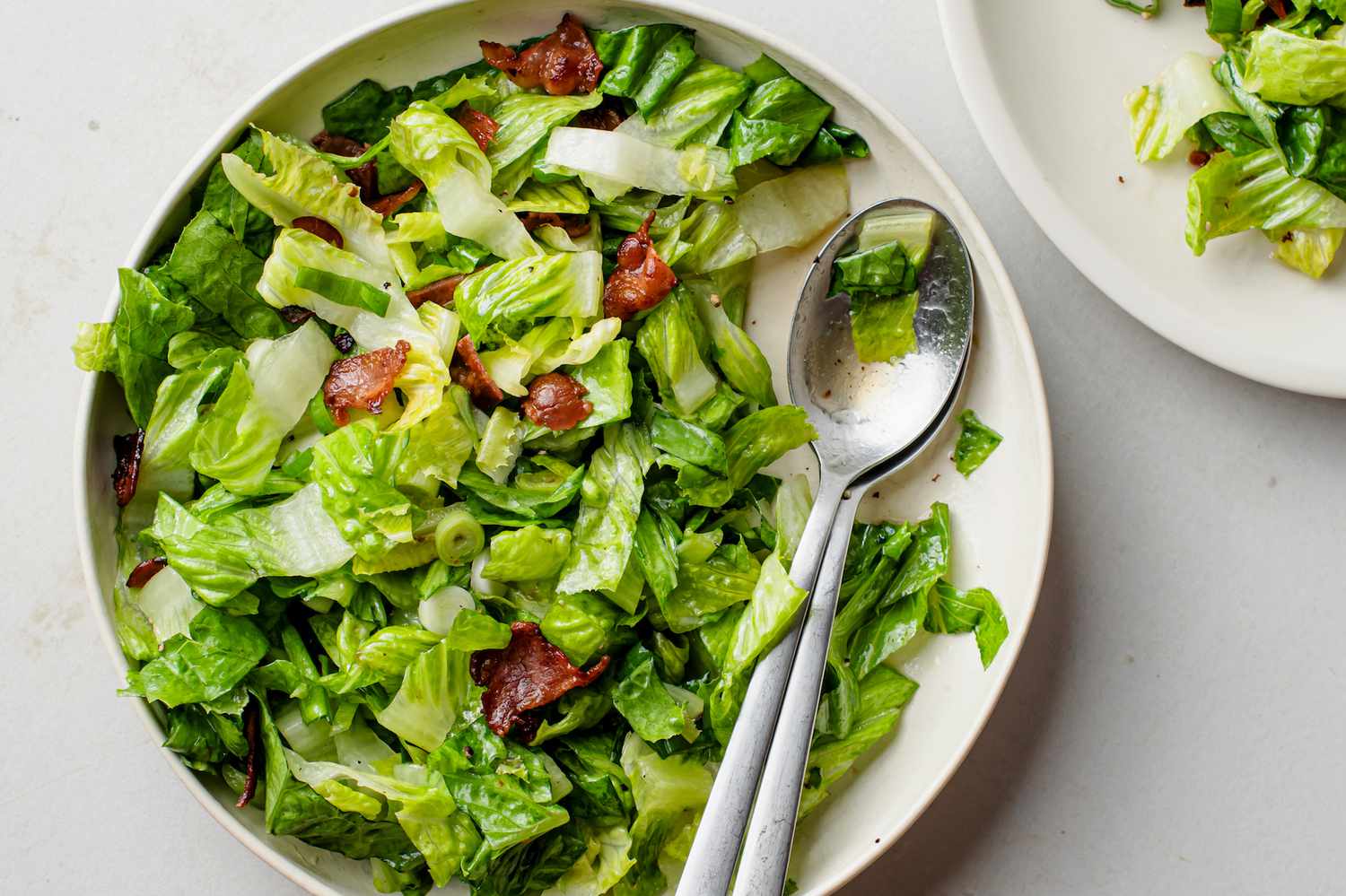Wilted Spinach Salad: Origins, Variations, and Nutritional Benefits
Wilted spinach salad has deep roots in culinary history, dating back to traditional European cooking. In many cultures, spinning off from ancient times, using slightly cooked greens provided both warmth and enhanced flavors. Early records show that the method of wilting spinach by applying heat emerged as a solution to create a different texture and taste without losing nutrition.
By the 19th century, spinach became a favored leafy green in many societies. People appreciated its versatility. Chefs and home cooks alike experimented with wilting techniques to incorporate it into various dishes. Wilted spinach salad appeared in cookbooks from the early 20th century, often featuring a warm vinaigrette to slightly cook the leaves.
Regional Variations
Different regions put their own spin on the wilted spinach salad. In the Southern United States, you’ll find traditions that incorporate bacon drippings as the heating and flavoring element. This variation often includes onions and hard-boiled eggs. In contrast, Mediterranean-inspired versions might focus on garlic-infused olive oil, paired with ingredients like feta and olives.
In Asian cuisine, wilted spinach salads take on a distinct profile. For instance, Japanese chefs might use sesame oil and soy sauce, along with toasted sesame seeds, creating a unique flavor palette. Meanwhile, in Northern Italy, wilted spinach could get mixed with warm pancetta and a splash of balsamic vinegar.
By understanding the diverse historical roots and regional variations, you can appreciate how wilted spinach salad evolved into the adaptable and flavorful dish enjoyed today.
Key Ingredients in Wilted Spinach Salad
Role of Fresh Spinach
Fresh spinach serves as the foundation of wilted spinach salad. It’s packed with nutrients like vitamins A, C, and K. The freshness of spinach ensures optimal texture and flavor. Avoid using spinach that’s wilted or excessively bruised, as it affects both taste and presentation. Baby spinach leaves often work best due to their delicate texture and mild flavor.
Choice of Dressings and Their Impact
Dressings significantly influence the final taste of wilted spinach salad. Warm vinaigrettes, often based on olive oil or bacon drippings, meld flavors perfectly. Olive oil dressings, infused with ingredients like garlic or shallots, offer a Mediterranean touch. Bacon drippings provide a rich, savory flavor, ideal for Southern-style salads. In Asian variations, dressings featuring sesame oil and soy sauce add an umami depth. Always serve the dressing warm to achieve a truly wilted effect.
Additional Ingredients for Enhanced Flavor
Certain ingredients can elevate the taste of your wilted spinach salad. Common additions include:
- Bacon Bits: Crispy texture and smoky taste.
- Red Onion: Slightly sweet, sharp flavor.
- Cherry Tomatoes: Juicy and subtly sweet, adding freshness.
- Hard-Boiled Eggs: Creamy texture and additional protein.
- Nuts (Almonds or Pecans): Crunchy texture and nutty flavor.
- Cheese (Feta or Goat Cheese): Tanginess that complements the other flavors.
Incorporating these elements enhances flavor complexity and offers a pleasant mix of textures, making your wilted spinach salad more enjoyable.
Step-by-Step Recipe for Classic Wilted Spinach Salad
Preparing the Spinach
Rinse fresh spinach thoroughly under cold water, then pat it dry with a clean towel or use a salad spinner. Ensure there are no excess water droplets, as they can dilute the dressing. Trim and discard any tough stems, then place the spinach in a large mixing bowl.
Making the Perfect Dressing
Warm 1/4 cup of olive oil in a saucepan over medium heat. Add 2 minced garlic cloves and sauté until fragrant, approximately 1-2 minutes. Stir in 2 tablespoons of red wine vinegar and 1 teaspoon of Dijon mustard, then bring to a gentle simmer. Season with salt and pepper to taste. For added flavor, you can incorporate 1 tablespoon of bacon drippings or substitute with sesame oil.
Assembling the Salad
Pour the warm dressing over the prepared spinach in the mixing bowl. Toss gently to ensure even coating, causing the spinach to wilt slightly. Add additional ingredients like crumbled bacon, sliced red onion, halved cherry tomatoes, chopped hard-boiled eggs, toasted nuts, or shredded cheese for enhanced flavor complexity and texture. Serve immediately to enjoy the optimal taste and freshness.
Nutritional Benefits of Wilted Spinach Salad
Vitamins and Minerals in Spinach
Wilted spinach retains essential vitamins and minerals, providing numerous health benefits. Spinach offers significant amounts of Vitamins A, C, K, and folate. For example, 100 grams of spinach contain approximately 469 micrograms of Vitamin A, vital for eye health. Additionally, the Vitamin K content in spinach supports bone health, while folate aids in DNA synthesis and repair. Spinach also supplies essential minerals like iron, calcium, and magnesium. Iron in spinach helps with red blood cell production, crucial for oxygen transport. Calcium supports bone strength, and magnesium plays a role in muscle and nerve function.
Benefits of Warm Dressings
Warm dressings enhance both flavor and nutrient absorption in wilted spinach salad. Heating dressings amalgamates ingredients, creating a richer taste. Warm vinegar-based dressings, for instance, can help spinach leaves slightly wilt, making them easier to digest. Nutrient absorption increases due to the heat; warm dressings help release fat-soluble vitamins from spinach. These dressings, often infused with olive oil, add healthy fats that aid in the uptake of vitamins A and K from spinach. Using ingredients like garlic or mustard in warm dressings adds not only flavor but also extra antioxidants, enhancing the salad’s health profile.
Creative Twists on Traditional Wilted Spinach Salad
Incorporating International Flavors
Expand your wilted spinach salad by incorporating international flavors. Add Mediterranean ingredients like feta, olives, and sundried tomatoes to create a tangy profile. For an Asian twist, use sesame oil, soy sauce, and toasted sesame seeds. You can even mix in ginger and garlic for extra depth. Try Italian elements like pine nuts, Parmesan cheese, and a balsamic reduction. Adding these diverse ingredients enhances the salad’s flavor, making each bite unique and memorable.
Vegan and Gluten-Free Variations
Create delicious vegan and gluten-free variations of wilted spinach salad without sacrificing flavor. Use avocado or nuts like almonds and walnuts instead of traditional bacon drippings. Substitute soy sauce with tamari or coconut aminos for a gluten-free option. Nutritional yeast can replace cheese, providing a cheesy flavor without dairy. Incorporate chickpeas or quinoa for added protein. These modifications ensure the salad meets dietary needs while remaining flavorful and satisfying.
Conclusion
Creating a wilted spinach salad lets you explore a rich culinary tradition while enjoying a nutritious meal. By experimenting with different dressings and international ingredients, you can tailor the dish to suit your tastes and dietary needs. Whether you’re adding Mediterranean flavors or opting for vegan alternatives, the possibilities are endless. So go ahead and make this versatile salad a staple in your kitchen.






